Professional courses for all
Nowadays, it’s simpler than ever to learn and study. Since we launched the EEP Academy, thousands of electrical engineers, students, technicians, and many others have joined the ranks of those who are fervently seeking information and experience. The courses we picked in this article are highly ranked among students and suitable for electrical engineers, electricians, technicians, substation engineers and students.

The EEP Academy offers more than 90 practical and high-quality electrical engineering courses and bundles.
The courses on EEP Academy are pre-recorded and on-demand and include a certificate of completion. All courses students have purchased have unlimited lifetime access, so they can access them whenever they want.
It’s worth mentioning that the instructors are electrical engineers and senior electrical professionals with a minimum level of 10+ years of experience each. Most of them have served at the highest level of various industries throughout the world. The possibility to ask the instructor any question at any time will facilitate your understanding of complex lessons. Direct contact with the instructor will provide various clarifications regarding potential ambiguities.
More information about Premium Membership you can find here, and about Enterprise plan here.
Please note that courses are not ordered by importance or quality and that the list of the best ones doesn’t end here. There are also many other great courses and bundles worth checking. You can take a look at courses here – Course Catalogue, and bundles here – Bundle Catalogue.
- Design course for solar energy systems (off-grid, on-grid, protection and simulation)
- Learn to read and analyze circuit breaker schematics & control wiring diagrams
- ETAP power system design and analysis course for solving various practical problems
- Overcurrent protection course: Principles, relays, schematics and settings
- Learn how to depict switchgear and substation single-line diagrams
- Transformer differential protection course: Schematics, relay settings & testing
- Earthing and grounding in power systems: Calculations, design and measurements
- Power system analysis course: The essentials of load flow and short circuits
- Ultimate course to electrical drawings design using AutoCAD, Dialux and ETAP
- Low voltage distribution design course: AutoCAD, Dialux, Excel, calculations
- Power engineering course: Relay control and protection for LV/MV/HV switchgear
- The Power Substation Fundamentals Course: Theory, equipment, earthing, and design
- Power engineering course: Generators, transformers and transmission lines
- The essentials of relay protection and control in power systems
- Course to relay circuitry and understanding control and protection schematics
- Gas-insulated switchgear course: Design, installation, operation, maintenance & testing
- Relay protection course: Implementation of digital logic & schemes in protective relays
- Protection and control of high voltage power circuits
- Electrical on-site installations course: Steps in execution stages
- Electrical designing and drafting course (2 courses)
1. Design Course For Solar Energy Systems (Off-Grid, On-Grid, Protection and Simulation)
Course Content – 11 sections, 58 lectures and 11h 43m total course length


This course is designed for anyone who would like to learn everything about solar energy from A to Z for electrical engineers, solar designers, and all who are interested in working in the solar energy field. The course has 11 sections, 58 lectures in 11h 43m total length.
Course overview:
- Basics Of Solar Energy System
- Batteries In PV System
- Components And Design Of Off Grid Solar Energy System
- Designing Of On Grid Solar Energy System
- Design of PV System Using PVSyst Program
- Protection Of PV System
- Design Using Excel Sheet
- Single Line Diagram Of PV System
- MATLAB and ETAP PV Simulation
- Certificate of Completion
Who is this course for? – Solar enthusiast, electrical power engineers, electrical students, anyone who wants to get knowledge about solar system or PV Systems, and complete beginners with zero solar experience or knowledge.
2. Learn to Read and Analyze Circuit Breaker Schematics and Control Wiring Diagrams
Course Content – 39 lessons and 7h 14min total course length


This is an intermediate to advance level course dedicated to schematics and control wiring diagrams of high-voltage and medium-voltage circuit breakers. The course starts with explaining circuit breaker cubicle schematics and control wiring diagrams and continues with discussing each circuit in detail.
Wiring diagrams (panel wiring diagrams, control wiring diagrams) provide a road map of the connections between circuit breakers and other devices (disconnectors, CTs, VTs, etc.) to facilitate assembly, debugging, and testing. It’s very important to fully understand every detail you can find on these schematics.
After completing this course, you will be able to easily read and analyse the control and protection schematics of any substation or power plant (GIS, LCC, Switchyard, etc.).
Who is this course for? – Practicing power system engineers, substation engineers, maintenance staff, electrical engineering students planning on pursuing a career in power engineering, and power system protection engineers.
3. ETAP Power System Design and Analysis Course For Solving Various Practical Problems
Course Content – 29 topics and 8h 56m total course length


This course is dedicated to modelling and analysis using ETAP software and its functionalities for successful design & solving various power system practical problems. ETAP is an analytical engineering software which is helpful for an electrical engineer to simulate and analyze the steady-state and dynamic power system. It is used by various sectors such as generation, transmission, distribution, industrial, transportation and low voltage.
This course will help you to achieve your goals to become a true ETAP and power system expert.
The course will begin with the software overview, basics of one-line diagram creation, data entry, and quickly expands the users’ knowledge to include methods to automatically perform multiple ‘what if’ studies using multiple scenarios.
Who is this course for? – Electrical engineers, power system engineers, substation engineers, maintenance staff, electrical engineering students planning on pursuing a career in power engineering, and power system protection engineers.
4. Overcurrent Protection Course: Principles, Relays, Schematics and Settings
Course Content – 21 lessons and 3h and 29m total course length


The most common type of protection found in electrical power systems is overcurrent protection, which is also the simplest. Overcurrent type relays are thought to make up more than 80% of those in industrial and power systems. Consequently, it is crucial to comprehend and learn the true art of overcurrent relays. The course consists of 21 lessons in 3 hours and 29 minutes.
The course starts with explaining what is short circuit and the different types of faults in power systems and continues with the concept of short circuit current, load current, and percentage impedance of generator/transformer.
Special attention is paid to explaining the types of overcurrent protection i.e., instantaneous and time delay. Inverse time overcurrent relay, its types (Normal Inverse, Very Inverse & Extremely Inverse relays) and settings are explained in detail.
Who is this course for? – Practicing power system engineers, substation engineers, maintenance staff, electrical engineering students planning on pursuing a career in power engineering, and power system protection engineers.
5. Learn How to Depict Switchgear and Substation Single-Line Diagrams
Course Content – 16 lessons and 3h 37 minutes total course length
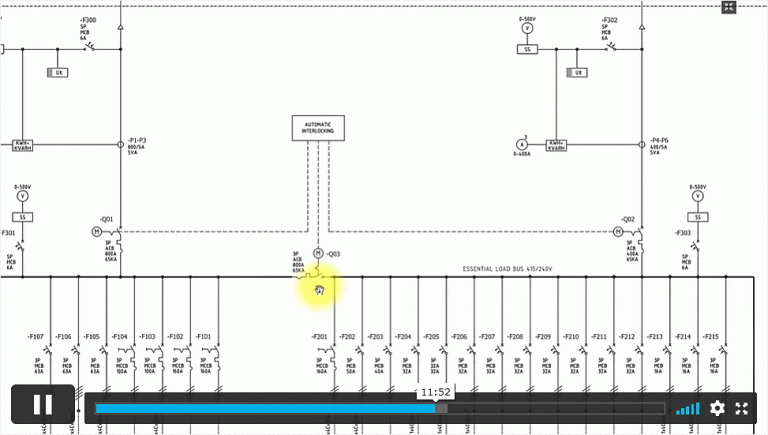

This course will teach you single-line and three-line diagrams, their differences and graphic electrical components that figure on them. You will learn various elements that represent equipment like a circuit breaker, isolator, earth switch, power transformer, voltage and current transformer, lightning arrestor, auxiliary transformer, etc.
You will also learn important switchgear parts like busbar system, mimic, control cubicle, cable compartment, local/remote control, interlocking (isolator/circuit breaker, isolator/earth switch, busbar isolator/busbar earth-switch), etc.
Finally, we will review the ACDB single-line diagram with interlocking, and 132/11kV single-bus and double-bus single-breaker scheme SLD, as well as relay and metering SLD.
Who is this course for? – Practicing power system engineers, substation engineers, maintenance staff, electrical engineering students planning on pursuing a career in power engineering, and power system protection engineers.
6. Transformer Differential Protection Course: Understanding Schematics, Relay Settings and Testing
Course Content – 22 lessons and 3h 53m total course length


This course deals with transformer differential protection, analyzing schemes, various relay settings and protection testing. We will analyze the transformer differential schematics and talk about current transformers (CTs), their errors and errors due to the tap changer in the transformers.
Special attention is paid to biased differential protection of transformer and modification of standard scheme by providing a restraining winding which is energized by the through current. We will also discuss relay protection setting calculations, MS Excel calculation sheet & plotting of slope, relay characteristics and trip characteristics.
The last lessons are dedicated to drawing the relay settings calculations curve and finding a point of intersection and drawing protection characteristics.
Who is this course for? – Practicing power system engineers, substation engineers, maintenance staff, electrical engineering students planning on pursuing a career in power engineering, and power system protection engineers.
7. Earthing & Grounding in Power Systems (Design, Calculations, & Measurements)
Course Content – 27 lessons and 4h 36m total course length
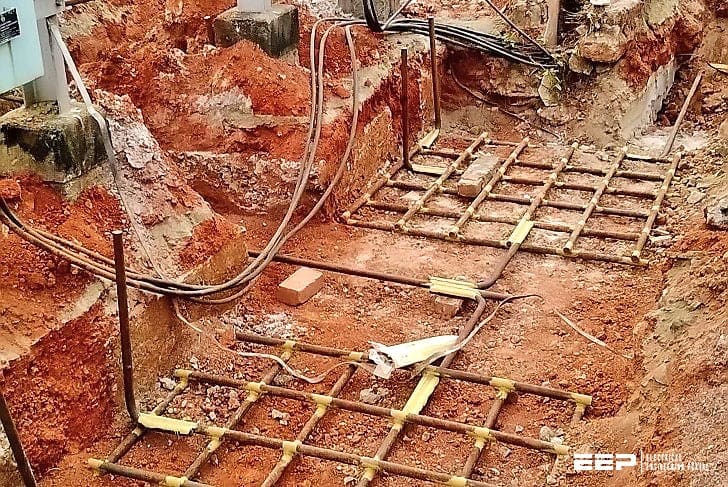

This course will teach you how to calculate, design, and measure earthing and grounding systems. This course covers all of the earthing issues that you can deal with in real-life applications. You will also learn step potential, touch potential, mesh potential, transfer potential, etc., which are fundamental concepts for designing earthing systems.
Section #1 – General Overview
You will learn why we need earthing and grounding systems and the three fundamental grounding systems called TN, TT, and IT.
Section #1 – Measurement
You will learn how to measure and calculate soil resistivity with different methods like the variation of depth method, Wenner method, and Schlumberger–Palmer method.
Section #3 – Design
You will learn different earthing topologies that you can use in your projects. A comprehensive example of the earthing system design is also included in the design section.
Section #4 – Calculation
You will learn each calculation method for different earthing system topologies like a single earthing rod, single earthing plate, earthing conductor mesh systems without earthing rods, earthing conductor mesh systems with earthing rods, etc.
Who is this course for? – Electrical engineers, technicians, electrical engineering students, anyone who wants to learn electrical power networks.
8. Power System Analysis Course: The Essentials of Load Flow and Short Circuits
Course Content – 37 lectures in 5h 48m total course length.
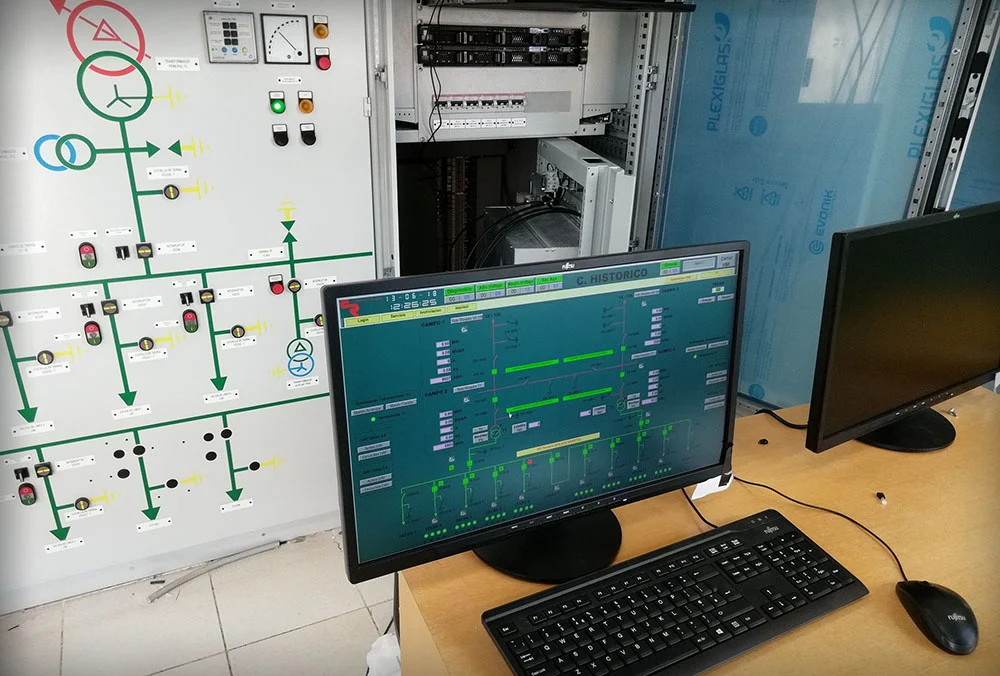

This course is dedicated to one of the main areas of electrical engineering: power system analysis. Power system analysis is the core of power engineering and its understanding is therefore essential for a career in this field. In this course, you will learn about power flow (load flow) analysis and short circuit analysis and their use in power systems.
The course is divided into the following sections:
Section #1 – Power Flow (Load Flow) Analysis:
In section 1, we will introduce the concept of power flow. Also referred to as load flow, power flow is the analysis of how apparent, real, and reactive power flows between parts of a power system, from generation to loads. Two different methods will be covered, which are the most widely used methods in power system analysis: the Gauss-Seidel method and the Newton-Raphson method.
Several examples will be solved to help explain how these methods are used for power flow analysis.
Section #2 – Short Circuit Analysis of Balanced Faults:
In section 2, we will introduce short circuits. Also referred to as faults, short circuits are undesired occurrences in power systems when conductors are shorted between each other, to ground, or a combination of these.
Section #3 – Short Circuit Analysis of Unbalanced Faults:
In section 3, we will continue discussing short circuits (faults) but will discuss the more complex analysis of unbalanced faults (e.g., single-line-to-ground, line-to-line, and line-to-line-to-ground faults). To do this, we will introduce the technique of symmetrical components, which allows us to analyze unbalanced power systems more easily.
In each section, several examples are solved to illustrate how to analyze real-world power systems.
Who is this course for? – Anybody with an interest in learning about power systems and power engineering.
9. Ultimate Course To Electrical Design Drawing Using AutoCAD, Dialux And ETAP
Course Content – 64 lessons and 8h 5m total course length
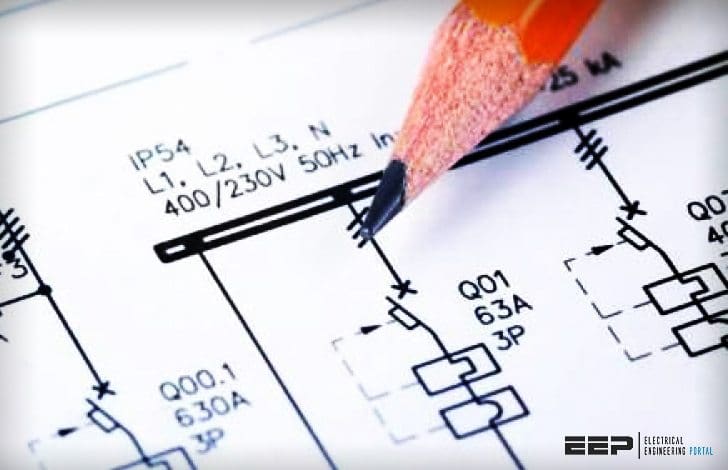

This course is essential for electrical power engineers who want to work in the electrical distribution field; this will guide you from zero even if you don’t know anything. You will learn to work and design electrical installations using the most common software like AutoCAD, DiaLUX, and ETAP, as well as to perform voltage drop calculation and short-circuit analysis.
The course covers the following topics:
- All necessary tools and commands required by electrical power engineers in AutoCAD.
- Basic definitions of lighting.
- Different types of electrical drawing, various lighting schemes, and lighting situations.
- Requirements for a good lighting scheme, maintenance, and utilization factors.
- Lighting design steps.
- Using lighting catalogs and photometric data in Dialux.
- Manual calculation for lighting instead of Dialux.
- Starting the interior design drawing in Dialux, by taking a factory floor, creating rooms, adding luminaries to each room, creating control groups, and adding to emergency and normal lighting scenes.
- Using AutoCAD and connect the luminaries with wires to a lighting control panel.
- Adding standard sockets and power sockets, and wiring to the panel.
- Lighting panel schedule for the project.
- Selecting circuit breakers and cables for project.
- Calculate the voltage drop and short circuit analysis using ETAP.
- Earthing system design.
Who is this course for? – Electrical power engineers who want to learn about interior electrical design.
10. Low Voltage Distribution Design Course: AutoCAD, DIALux, Excel, Calculations
Course Content – 62 lessons and 10h total course length
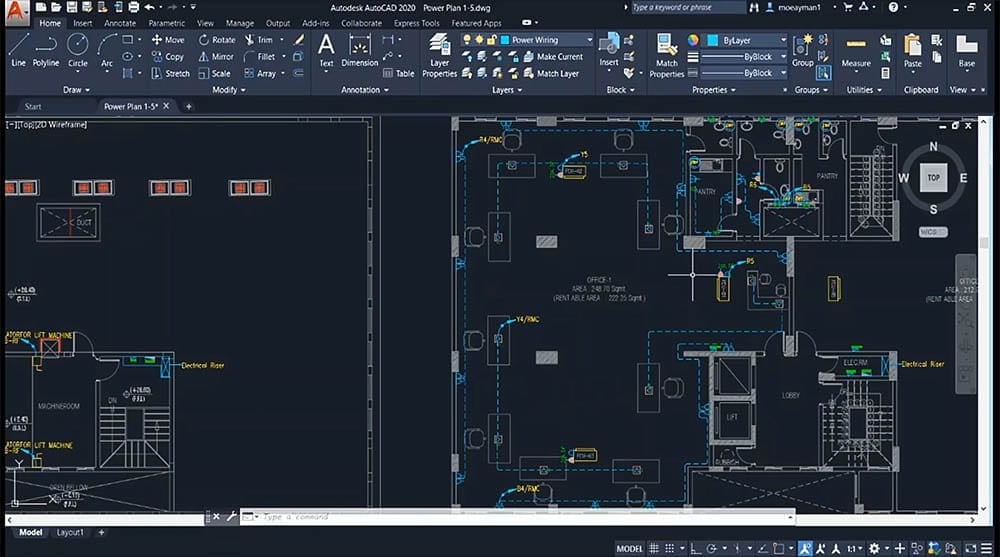

This course is dedicated to students who are looking to acquire electrical low-voltage power design experience from scratch. It covers low voltage distribution system design-related topics in a total duration of 10 hours.
Essentially, the course begins Section 1 by introducing the well-known drawing software “AutoCAD” by emphasizing its different toolbar options to prepare the student to be familiar with its use. Consequently, lighting design and lux calculations using DIALux software are fully explained in Section 2 to prepare for the lighting distribution system explained and designed as the following step in Section 3.
Thereafter, lighting & power systems distribution is covered in Sections 3 & 4, which in turn prepares the student to understand how to gather information and calculate the total connected loads by the lighting and power designed layouts to be reflected in the panel schedules and single line diagrams which will be explained in the 5th section of this course.
All these calculations will be explained separately in detail using simple steps that you will be able to apply manually and with the help of predefined Excel sheets for solving different formulas in Section 6.
The last section of this course covers the earthing and lightning system topics emphasizing their different types, components, and the appropriate methods to design these systems according to international standards.
Besides, the course is enhanced with a variety of helpful resources that are attached to it (XLSX, DOC, DWG, and PDF).
Who is this course for? – Electrical engineers, electrical draughtsmen, electrical designers, electrical fresh graduates and technicians.
11. Power engineering course: Relay control and protection for LV/MV/HV switchgear
Course Content – 129 lectures and 17h 11m total course length


This course gives you a complete understanding of various power system elements, like protection relays, instrument transformers, circuit breakers, etc. You will learn how to adjust the settings of various protection functions and their applications through real-world examples and practical applications.
One hundred twenty-nine lectures in total course length of 17h 11m are arranged progressively to start from beginner level to advanced one. You will find learning the lessons very easy with the accompanying documentation.
Some of the topics you will learn in this course:
- Why Do We Need Protection System
- Different Protection System Elements
- Understand trip circuit connection
- To Differentiate between primary and backup protection
- Different Methods of Back up Protection
- Understand Zones of Protection
- Applications on Protection Zones of Real Power Systems
- To Differentiate between protective system and protective scheme
- The meaning and causes of short circuit faults
- Types of Electric Faults
- Establishment of SC Current and Waveform
- Realize Consequences of Short Circuit Faults
- Operation & Function of Protective Relays
- How to Adjust Protection Relay Settings
- Required qualities of Protective Relay
- Types of Relays According to Function
- Types of Relays According to Time C/C’s
- etc.
Who is this course for? – Anyone who wants to learn electric protection and control from scratch, electrical engineering students and graduates, electrical engineers who work in the field of substations and switchgear, electrical control engineers, electricians, technicians, and power/utility engineers.
12. The Power Substation Fundamentals Course: Theory, Equipment, Earthing, and Design
Course Content – 29 lectures and 5h 1m total course length


This course tackles the most important aspects of a power substation (basic theory, electrical equipment, earthing, and design guidelines).
A power substation is an essential part of an electrical generation, transmission, and distribution system. The assembly of apparatus used to change some characteristics (e.g. voltage, frequency, p.f., A.C. to D.C., etc.) of an electrical supply is called a substation.
This 5-hour course will discuss the following topics related to electrical power substations:
- Function, classification, and voltage of electrical substations.
- Main components like power transformers, conductors, insulators, switch gears, current transformer, capacitor voltage transformer, and voltage transformer.
- Different types of circuit breakers, relays, their classification according to time, construction, and function.
- Difference between circuit breaker and fuse and their applications.
- IP or ingress protection.
- Grounding system including the effect of current on the human body and components of the grounding system.
- Types of electric hazards and classification of earthing systems.
- Measuring the earthing resistance by Megger and the three-point method.
- Design of an earthing system using ETAP program.
- Ring main unit and its importance in electrical power system.
- Types of switches used in electrical power systems and substations.
- Overhead transmission lines, underground cables, and the difference between them.
- Busbars in power system, its importance, its different schemes and how to select them.
- Lightning arrester and wave trap used in substations.
- Air and gas-insulated substations.
- Overview of the design of an electrical substation and single line diagram of 66/11 kV substation.
Who is this course for? – Electrical power engineers who want to learn about electrical engineering power systems and substations.
13. Power engineering course: Generators, transformers and transmission lines
Course Content – 37 lectures and 5h 48m total course length
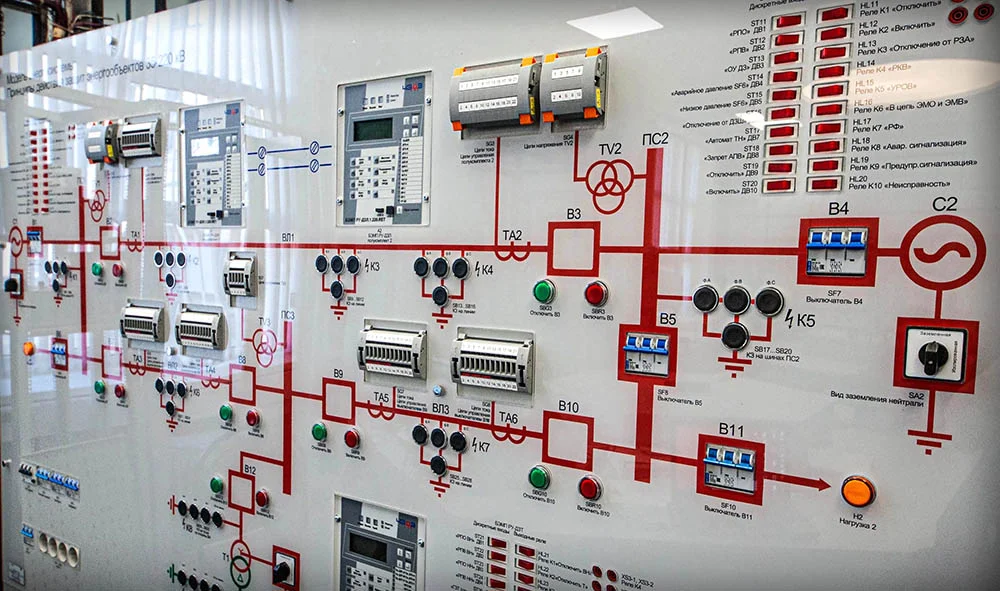

Power system analysis is the core of power engineering and its understanding is therefore essential for a career in this field. In this course you will learn the essentials of generators, electrical transformers, capacitors, and transmission lines as well as their use in power system analysis.
The course is divided into the following sections:
Section #1 – Generator Models
In section 1, we will introduce the synchronous generator, which is where all the power in power systems comes from. We’ll begin by defining the circuit model of the synchronous generator so that we can analyze its performance. We will then continue to discuss key concepts, such as voltage regulation and the power angle, and will end with several examples.
Section #2 – Transformer Models
In section 2, we will introduce the power transformer (also called an electrical transformer). Transformers allow power systems to operate at different voltage levels and are an essential part of any power system.
Section #3 – The Per-Unit System
In this section we will introduce the per-unit system. The per-unit system is a technique used extensively in power system analysis and is therefore essential that it is understood.
Section #4 – Transmission Line Models
In section 4, we will discuss the different transmission line models depending on their length, as well as why these models are good approximations of real-life characteristics.
In each section, several examples are solved to illustrate how to analyze real-world power systems. By learning all the different circuit models of the components used in power systems, you will be able to continue your study of power system analysis for a career in power engineering and electrical engineering.
Who is this course for? – Anybody with an interest in learning about power systems and power engineering.
14. The Essentials of Relay Protection and Control in Power Systems
Course Content – 85 lectures and 9h 11m total course length
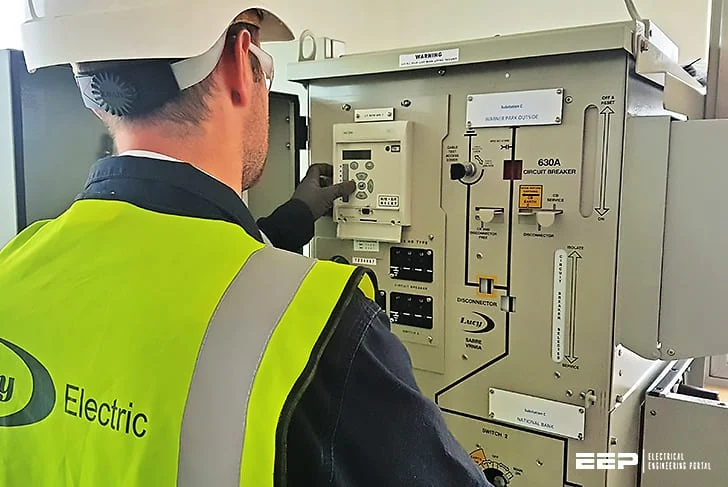

Protection & control systems are a critical part of the transmission and distribution systems that feed power to mega-cities & industries. This course aims to introduce all of the basic principles associated with electrical power systems protection with many examples. The instructor gave his best to include a practical example from the field as he has over 17 years of field experience in substations.
This course includes real examples, equipment nameplates, single line diagrams, real field examples.
Some of the topics you will learn in this course:
- Primary, backup & duplicate protection,
- Primary & secondary equipment, electrical wiring basics,
- Relay classification, electromechanical, digital, microprocessor & numerical relays,
- Auxiliary relays, main relays, and contactors,
- Phase & ration compensation in transformer differential protection, interposing CTs,
- Difference between Circuit Breaker & Isolator & Load Break Switch,
- The concept of interlocking,
- Batteries & charger, how they work, Single Line Diagram of DC system, Single Line Diagram of Charger,
- Surge arrestor & surge counter,
- LCC, Gas diagram, Gas compartment, Gas permeable & Gas tight, Relay Coordination,
- GIS, AIF & MV switchgear types,
- etc.
Who is this course for? – Electrical engineering undergraduates and graduates, technicians, power/utility engineer, and anyone interested in electrical engineering.
15. Course to relay circuitry and understanding control and protection schematics
Course Content – 50 lectures and 8h 22m total course length
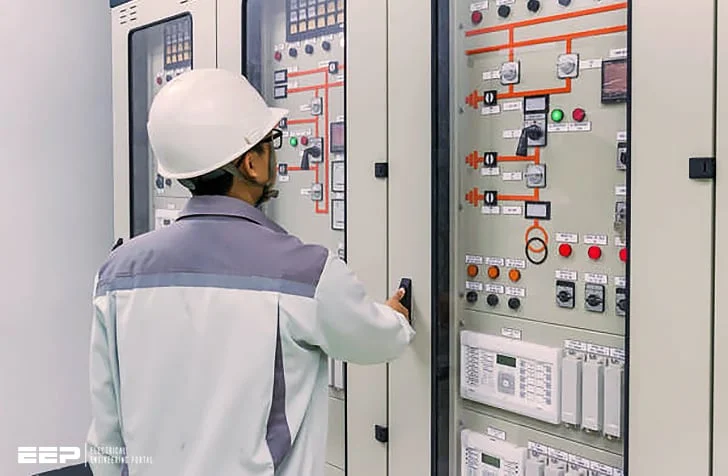

This course covering basic level to intermediate will teach you to understand relay circuitry and read and analyze control and protection schematics. It contains almost nine hours of interactive training resources explained using a writing pad. You know that there is no place for a partial understanding of relay circuitry. You must fully understand closing & tripping, indication, and alarm circuits for various circuit breakers indicated by ferrule numbers.
These are just a part of what you will learn after taking this course!
By the end of the course, the student will learn how to read and analyze control and protection schematics of relay protection panels and to understand how all of these panel components work.Some of the topics covered in this course:
- Protection philosophy, ANSI and IEEE codes,
- Terminal block and ferrules,
- Auxiliary Contacts: Normally Open (NO), Normally Closed (NC) and Changeover (CO) Contacts,
- Drawing page addressing method, symbols and legends in drawings, single line diagram,
- Relay power supply and watchdog contact,
- Current and voltage transformers (CTs, VTs),
- Input and output (I/O) contacts,
- Protection, control and LCC panels,
- Lockout, flickering and timer relays,
- Tripping coil and tripping circuit,
- How to read cross references in drawings,
- DC supervision relay, MCB trip function circuits,
- Understanding the concept of loop, CT loop, VT loop test block,
- etc.
Who is this course for? – Practicing power system engineers, substation engineers, maintenance staff, electrical engineering students planning on pursuing a career in power engineering, and power system protection engineers.
16. Gas-Insulated Switchgear Course: Design, Installation, Operation and Maintenance, Testing
Course Content – 16 lessons and 3h 2min. total course length
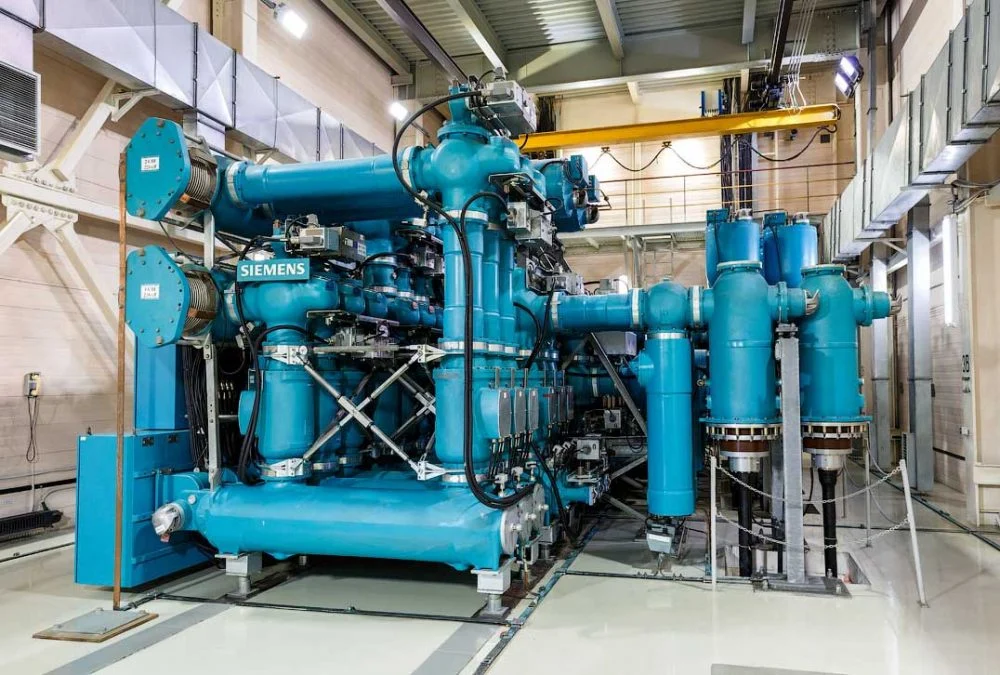

This course covers the essentials of a Gas-Insulated Switchgear, or shortly ‘GIS‘, that every electrical engineer who deals with power substations and electrical equipment in the field should know. You will learn all major equipment installed within GIS, such as circuit breaker or switch, disconnector, grounding switch, current and voltage transformers, busbars, busducts and interconnecting parts, SF6 gas-to-air bushing, cable box/cable sealing, power transformer interface chamber/bushing, and surge arrester.
Students will learn why gas-insulated switchgear is often used in industrial areas to fulfill high energy demands by space saving design with a minimum of cost, and why only SF6 insulated switchgear is able to fulfill these requirements.
Some of the topics covered in this course:
- Comparison of AIS Vs GIS
- GIS Installation, Operation and Maintenance
- Total Cost of Ownership
- Circuit Breaker
- Pole Marking
- Interrupter Unit
- Single & multiple interrupter
- Why it is required to add interrupter unit
- Why interrupter units are added in series
- Single mechanism for each pole and single mechanism for each pole
- Pole Discrepancy
- Arc Quenching
- Circuit Breaker Chamber details
- Circuit Breaker Operating Mechanism
- What is SF6 electronegativity?
- Why speed of circuit breaker is important for arc quenching?
- CB fixed and moving contacts
- Why too fast CB closing create problems?
- etc.
Who is this course for? – Practicing power system engineers, substation engineers, maintenance staff, electrical engineering students planning on pursuing a career in power engineering, and power system protection engineers.
17. Relay Protection Course: Implementation of Digital Logic and Schemes in Protective Relays
Course Content – 13 lessons and 2h 16m total course length


In this course, you will learn how to implement digital logic in protective relays and how to build logic schemes of enable/disable switches, permissive tripping, overcurrent blocking, breaker failure, and automatic reclosing. Power system protection and control ensures the reliable continuous operation of power systems and is, therefore, an essential area of power engineering.
The course consists of 13 lessons in 2h 16m total length and it’s divided into the following sections:
Section#1 – Introduction to Protective Relay Logic
We will begin the course by introducing logic gates and how they work. You will learn the operation order of logic functions and how to develop truth tables to determine the proper operation of logic schemes.
We will finish the section by discussing some functions commonly used in protective relay logic: timers, latches, and edge triggers.
Section#2 – Applications of Logic in Protective Relays
Having defined the fundamentals of relay logic, we will move into developing practical examples. We will be taking a look at how to build five different logic schemes: enable/disable switches, permissive tripping schemes, overcurrent blocking schemes, breaker failure schemes, and automatic reclosing schemes.
Who is this course for? – Practicing power system engineers, electrical engineering students planning on pursuing a career in power engineering, and power system protection engineers.
18. Distribution Substation and Feeder Protection Course
Course Content – 5 chapters and 3h 51 min total course length
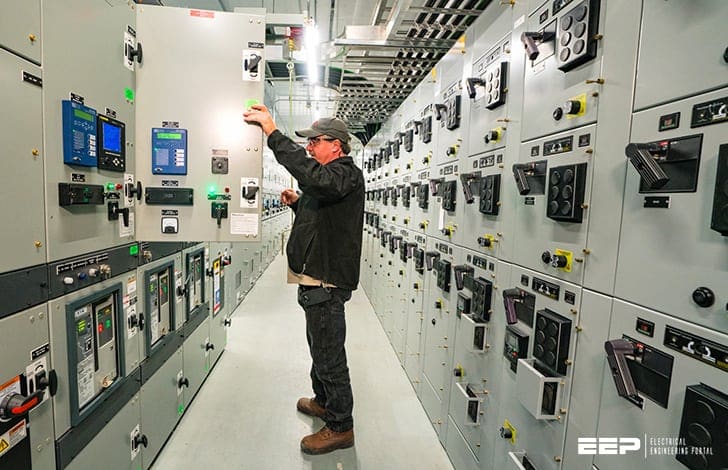

This course covers utility distribution stations and feeder protection including fuses, new intelligent electronic device (IED) relays, and old-school time overcurrent relays. Feeder relays and apparatus are examined including reclosers. The final exam with 17 questions in included.
Power transformer protection is reviewed including current mismatch caused by differing CT ratios; delta-wye transformation & currents shifts; mismatch induced by load tap-changers; CT saturation and remanence, inrush phenomena, and harmonic content problems.
Chapters in this course:
- Per Phase Analysis
- Substation Protection
- A Protection Coordination Problem
- Surge Protective Equipment
- Transformer Protection
Who is this course for? – Engineers, technologists, technicians, supervisors and students.
19. Electrical On-Site Installations Course: Steps in Execution Stages
Course Content – 38 lessons and 3 hours 38 mins. total course length


This course is dedicated to students who want to learn how electrical installations are done on-site during execution stages. The course shows how electrical 1st, 2nd and 3rd fix must be installed. This includes installation of PVC, metallic and flexible conduits, cable trays, panels, distribution boards (DB) and wire termination, and finally testing.
In Chapter 1 (First Fix Stage), you will learn how PVC, metallic and flexible conduits are installed either inside concrete slabs or in different types of walls and ceilings. Moreover, you will learn how cable trays and trunks are installed, explaining their various uses
In Chapter 2, and as part of the Second Fix Stage, you will learn how wires must be pulled inside conduits. Pulling of wires must be done considering the conduit fill ratio that must be calculated before pulling wires which will be explained in detail in this chapter.
By reaching this stage of the course, the Cable and Wire Testing chapter will guide you on how to test cables and wires using the Megger testing device. In particular, this chapter will show you practically how to perform the Megger (Insulation) test of cables and wires using the megger device through real videos performed during the site execution stage to ensure the quality of cables and wires before energizing the project.
In the last chapter of this course (Third Fix Stage), and after the first, second and testing stages are explained, you will learn how light fixtures and power sockets are installed in ceilings and walls to finalize the electrical installations before the energisation and operation of the project.
Who is this course for? – Electrical graduates and freshers, electricians, electrical designers and operators, site engineers & technicians.
20. Electrical Designing and Drafting Course (Two Courses)
Course Content – 136 lectures in 13h 51m total length.
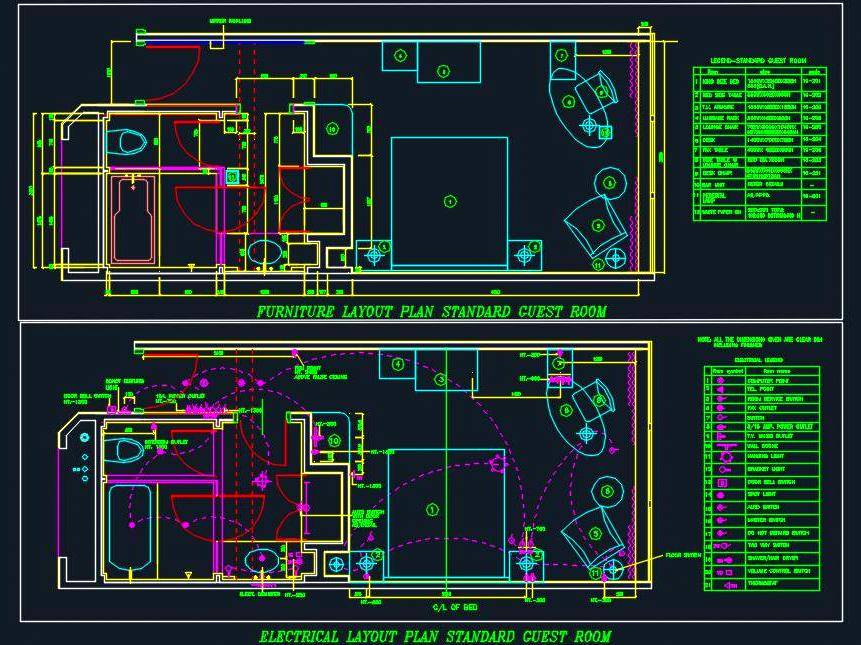

This course introduces the student to the process of designing residential and commercial projects. After completing this course, you will have high confidence in your practical work and start working on your design projects using AutoCAD. Or if you are fresher, you can start your career as a professional in this competitive world.
Students will learn various electrical calculations and have an access to the comprehensive chapter for learning AutoCAD from scratch to professional level (60 lessons + real project included in DWG). All calculations and explanations are as per the NEC and other international codes and standards.
- Basics of electrical: The basics of electrical engineering, basic formulae, types of load, operating voltage levels, etc.
- Basic formulae: Some most important formulae plus a short assignment for you.
- Codes, Standards & Lux Levels: Internationally acceptable codes & standards, lux level required for any area for lighting design.
- Illumination Design: Types of lighting lamps, types of the lighting system, Kelvin Color Temp., CRI.
- Basics of Air Conditioner: For small projects, you will learn the basics of A/C.
- Circuit Breakers: What is CB, types of CB, working & operation, calculation, etc.
- Capacitor Banks: The need for a capacitor bank, the benefits, and how to calculate the size of the capacitor bank.
- Electrical Designing: Calculation of lighting/raw power socket, fans, no. of lighting fixtures, sizing of A/C, load scheduling/balancing, distribution board, etc.
- Electrical Motors: Types of motor and their application, starting methods, starting current, etc.
- Electrical Transformer: Transformer parts, classification, cooling methods, winding insulation class, faults, size calculation, etc.
- Diesel Generator: DG parts of DG, ATS, transformer classification, DG faults, size calculation, etc.
- UPS: Introduction, types, size calculation, battery size calculation.
- Cables & Cable Sizing: Introduction, cable sizes, cable parts, insulation types, important points related to cable, size calculation, etc.
- Voltage Drop Calculation: Voltage Drop Calculation in a cable.
- Short-Circuit Calculation: Short circuit current capacity calculation for proposed cables, calculate the tripping time of CB.
- Cable Tray Size Calculation: The concept of cable tray, cable tray size calculation.
- Earthing: Earthing concept and calculation of earthing pit, strip, rod, etc.
AutoCAD (60 Lessons) – This section relates to the software part, where this AutoCAD chapter you will learn how to use AutoCAD in a professional manner, control keys, function keys, basic drawing commands, modifying commands, editing commands, dimension commands, block/layer, print commands, etc, plus practice.
Assignment At the end, you have given a Real-Time Project for ground + five floors. You have to do all the calculations for a complete electrical design for this building.
Who is this course for? – Electrical graduates, electrical designers, freshers, electrical operators, developers, site engineers, facility maintenance personel, and technicians.

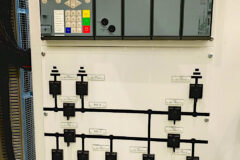





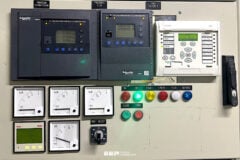
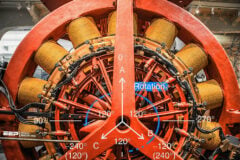


My academic background has prepared me well for a degree in engineering. I have excelled in my Math and Science coursework, receiving high grades in all of my relevant subjects. I have also participated in extracurricular activities, such as robotics competitions and science fairs, where I have had the opportunity to apply my knowledge and skills in practical settings while mentoring and coaching younger students.
I am an electrical engineer looking for a short term training on different electrical courses
Les cours sur chaque domaines sont bien signifier et très bien lister